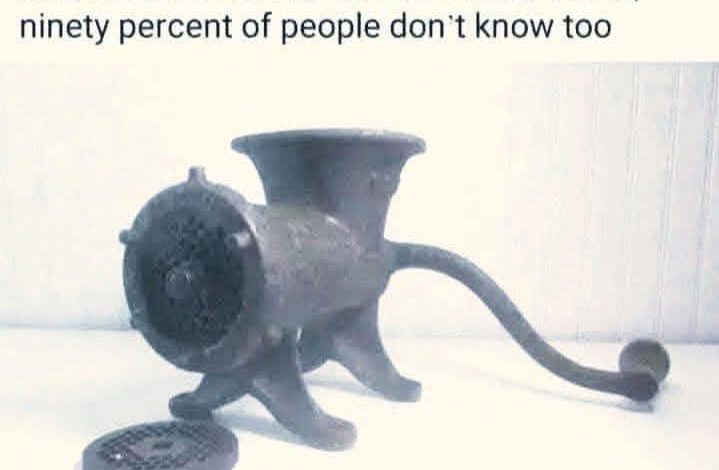
ADVERTISEMENT
The Forgotten Kitchen Tool: A Tribute to the Vintage Meat Grinder
Introduction:
In the age of sleek blenders, electric food processors, and touch-screen air fryers, some tools from the past have become almost unrecognizable. The object in this image — rusty, sturdy, and mysterious — has left many scratching their heads. What is this thing? Some claim even the internet can’t figure it out. But for those who grew up in traditional kitchens or have a keen eye for vintage culinary gear, this is more than just a piece of metal. This is an old-fashioned manual meat grinder, a kitchen essential from a bygone era that deserves appreciation for its role in feeding families long before modern convenience.
Body:
The vintage meat grinder was a staple in many households before supermarkets sold neatly packaged ground meat. Made of cast iron or heavy steel, it was designed to be clamped onto the edge of a sturdy kitchen counter or table. Meat, often fresh cuts from a local butcher or home-raised livestock, was fed into the top funnel. By cranking the handle, the meat was pushed through sharp internal blades and forced out through a perforated disk, ready to be used in meatballs, sausages, meatloaf, and more.
This tool wasn’t just functional — it was part of a lifestyle rooted in resourcefulness and tradition. Families would often grind leftover meat, bones for broth, or even vegetables for preserves. The process wasn’t quick or effortless, but it was real. It brought people together in the kitchen, hands-on and heart-in, transforming raw ingredients into nourishing meals.
ADVERTISEMENT
To today’s generation, the meat grinder may seem intimidating, outdated, or even unidentifiable — as humorously suggested by the caption in the image. But it represents a time when cooking was a craft and food was prepared with care. It also symbolizes sustainability — using every part of an ingredient to avoid waste — a concept that is making a powerful comeback in our current culinary conversations.
The grinder’s design, now rusty with age, may not fit into the aesthetic of a modern kitchen. But its legacy lives on in the innovation it inspired and in the dishes still beloved today.
Conclusion:
The image may ask, “Do you know what this is?” — and for many, the answer is no. But this forgotten relic tells a story of heritage, resilience, and the evolution of how we prepare our food. It reminds us that even the simplest tools can hold deep cultural value. The manual meat grinder isn’t just a kitchen artifact; it’s a testament to the dedication and ingenuity of past generations. So, the next time you come across one at a flea market or tucked away in a grandparent’s kitchen, take a moment to admire it — and perhaps even give it one more crank for old times’ sake.
ADVERTISEMENT




